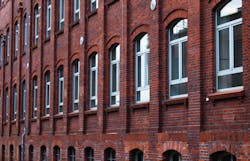A Material Matter: Designing With Composites in Mind
Not just for pizza toppings, mushrooms are transforming the construction industry. Using bioengineering, architects could soon be able to grow their own bricks by mixing together mycelium and chopped corn husks to create blocks that are solid enough to form durable structures.
Growing your own building materials takes commitment—and complete faith that a fungus will deliver the structural and mechanical benefits the design requires. This doesn’t only apply to mushrooms. Whether it’s for a vehicle, building or piece of infrastructure, the material that is selected during the initial design phase needs to tick all the right boxes.
Making the Selection
Let’s think of a bicycle as an example. For a bike to achieve everything the product designer requires—light weight, comfort, sturdiness, and speed—material choice lies at the heart of all of these requirements. As a result, if materials that are too heavy, too hard or susceptible to corrosion are selected, the bicycle will be unable to fulfill these intentions.
While mushrooms could be the next concrete, composites are already replacing legacy materials in a number of applications to help design engineers deliver on a wealth of requirements. But why should composites be your material of choice?
Added Extras
Selecting a material for a product’s design requires a number of considerations. Just some of the factors that design engineers must take into account include where the product will be used, the length of its intended lifespan, costs, and the benefits it needs to bring to the end-user.
Sourcing a material that delivers everything you want it to isn’t always easy. With more traditional materials, such as steel, the benefits can be limited. The steel itself includes additional alloys such as nickel and manganese to improve its tensile strength, but these cannot be switched out and replaced with other additions depending on a product’s unique needs.
For a more personalized take on material choice, composites can be adapted to the specific requirements of the end product. Resin and fiber choice can be designed for added strength, improved ultra-violet (UV) resistance, electrical insulation, protection against corrosion and can even alter a composite profile’s aesthetics by changing its color and surface texture. Fiber choice and direction changes can also be selected to tailor the strength and stiffness of the finished product.
These factors make composites an attractive option in product design as they mean that the material can be catered to the individual requirements of the application.
Simple Designs
Composites can also help reduce manufacturing complexity. For example, a single pultruded profile can form one solid product instead of multiple pieces that need to be joined together. Profiles can even integrate other functions, such as hinges, to provide design engineers with a single solution that requires fewer materials and less labor.
What’s more, producing a single composite profile reduces the number of joins and seams that are required in the overall product design. This is particularly useful for larger lengths, such as hand rails or building facades.
Let’s Deflect
No matter what kind of product you’re producing, you want it to be built to last. When thinking of durability, it is more common to think of how rigid material is and its ability to maintain its shape under demanding conditions. However, it is sometimes more beneficial for material to drift away from these qualities.
Deflection is the degree to which a structural element is displaced under an external load and may refer to an angle or a distance. If a heavy load or significant amount of pressure is applied to a material, it springs or bounces along with it rather than retaining its shape and snapping under pressure.
Composite materials such as fiberglass have high deflection capabilities, meaning that they can bear significant loads without breaking. If we think about buses, this material quality is particularly useful for withstanding the bumps and dings of mass transport.
Understanding the Customer
Composites offer design engineers a multitude of benefits, making them an ideal choice for product design. However, the key to composites’ success is in understanding exactly what the customer wants to achieve.
At Exel Composites, we will always recommend what we feel is the best solution for your needs, even if it means selling you a less expensive product. For example, a customer felt they needed a carbon fiber tube solution, yet after having a clear understanding of their needs, a carbon and glass fiber hybrid composite solution that was adapted for their needs, which also saved costs for the customer, was recommended. It is this relationship building that allows the customer to get the most out of what composites have to offer to make their project a success.
Growing your own building materials from mushrooms may sound like an eccentric measure to take control on material choice, but the unique fungus-walled buildings the bricks can produce demonstrates that material choice is central to overall product design. When selecting the right material for any product, composites can tick a number of boxes. However, true success relies on solid relationships with a reliable composites expert who can help make sure this flexible option is the perfect fit for your designs.
